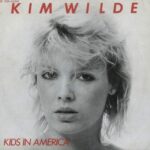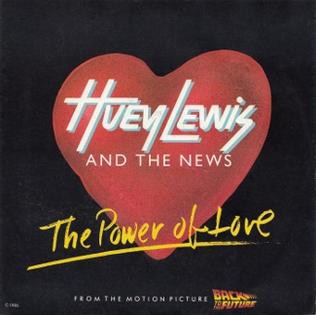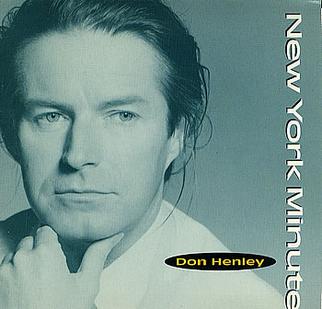 When Kim Wilde released “Kids in America” in January 1981, the world of pop music was in the middle of a dramatic transformation. Punk rock’s raw rebellion was giving way to the slick, synth-driven sounds of the New Wave era. British acts were exporting their own style of youthful energy and cutting-edge production across the Atlantic, reshaping global pop culture. Into this shifting landscape came a song that perfectly captured the restless spirit of young people everywhere: “Kids in America.”
When Kim Wilde released “Kids in America” in January 1981, the world of pop music was in the middle of a dramatic transformation. Punk rock’s raw rebellion was giving way to the slick, synth-driven sounds of the New Wave era. British acts were exporting their own style of youthful energy and cutting-edge production across the Atlantic, reshaping global pop culture. Into this shifting landscape came a song that perfectly captured the restless spirit of young people everywhere: “Kids in America.”
More than four decades later, “Kids in America” stands as one of the quintessential New Wave singles—an infectious burst of youthful defiance, shimmering synths, and an anthemic chorus that continues to ignite dance floors, movie soundtracks, and live performances. At once distinctly British and universally relatable, the song represents a bridge between the post-punk grit of the late ’70s and the neon optimism of the early ’80s. This article takes a deep look at the origins, sound, impact, and enduring cultural power of Kim Wilde’s signature hit.
A Family Affair: The Origins of “Kids in America”
“Kids in America” was born not in a boardroom or a record label’s marketing meeting, but in a suburban family home. Kim Wilde, the daughter of ’50s British rock ’n’ roll singer Marty Wilde, had grown up surrounded by music. Her father had scored hits in the UK during the first wave of rock and roll, and her younger brother Ricky Wilde was a budding musician and producer. It was Ricky who first sketched out the musical framework for “Kids in America,” crafting a demo that combined pulsing synthesizers with chugging guitars—a sound that was part punk urgency and part futuristic pop.
The lyrics came from Marty Wilde, who envisioned a song that captured the restless energy of teenagers yearning for excitement in a monotonous world. Despite the title’s American reference, the song wasn’t a literal tribute to U.S. youth culture. Instead, “Kids in America” used America as a metaphor for youthful rebellion and possibility. In early ’80s Britain, American pop culture loomed large, symbolizing freedom and adventure. Marty’s lyrics tapped into that fantasy while speaking to universal adolescent frustration:
“Looking out a dirty old window
Down below the cars in the city go rushing by
I sit here alone and I wonder why…”
These opening lines immediately evoke the image of a bored teenager staring out at a world that seems to be moving too fast and not fast enough. The chorus delivers the rallying cry:
“We’re the kids in America (whoa-oh)
Everybody live for the music-go-round!”
It’s a celebration of music as liberation, a call to escape the drudgery of everyday life through rhythm and sound.
Kim Wilde’s Breakthrough Performance
Though written and produced by her father and brother, “Kids in America” would not have achieved its iconic status without Kim Wilde’s magnetic presence. At the time of the song’s recording, Wilde was a 20-year-old art student with striking looks—blonde hair, sharp cheekbones, and a cool, detached demeanor that perfectly suited the New Wave aesthetic.
Her vocal delivery on the track is a study in controlled excitement. She doesn’t belt the lyrics in a traditional pop diva style; instead, she sings with a mixture of aloofness and urgency, embodying the restless youth she’s describing. There’s a tension in her voice that suggests both boredom with the present and anticipation for something better.
Wilde’s image was equally important. Dressed in leather jackets, jeans, and minimal makeup, she projected a tough yet approachable persona that contrasted with the overly glamorized pop stars of the late disco era. She looked like someone you might actually meet at a club or a concert—a real kid of the new decade, not a manufactured idol. This authenticity helped make “Kids in America” not just a hit song, but a generational statement.
The Sound of a New Era
Musically, “Kids in America” is a masterclass in early ’80s pop production. Built around a driving four-on-the-floor beat, the song layers chunky rhythm guitar with shimmering synthesizers and a propulsive bassline. Ricky Wilde’s production draws on the energy of punk and the sleek textures of New Wave, creating a sound that feels both edgy and radio-friendly.
The synthesizer hooks are particularly important. While guitars had dominated rock throughout the 1970s, “Kids in America” placed synths front and center without losing rock’s sense of urgency. The result was a hybrid sound that appealed to both rock fans and dance music enthusiasts—a key factor in the song’s cross-Atlantic success.
Even today, the production holds up remarkably well. The combination of analog synths, live drums, and guitar creates a rich, organic texture that avoids the dated thinness of some early electronic pop. The track’s tempo and arrangement give it a forward momentum that still sounds exciting in clubs, on playlists, or blasting from a car stereo.
Chart Success and Global Breakthrough
Released in January 1981, “Kids in America” was an immediate hit in the United Kingdom, reaching No. 2 on the UK Singles Chart. Its success spread rapidly across Europe, topping the charts in multiple countries including Finland and South Africa. By the summer of 1982, the song had crossed the Atlantic, climbing to No. 25 on the Billboard Hot 100 in the United States—a significant achievement for a debut single by a young British artist.
The single’s performance launched Kim Wilde into international stardom almost overnight. Her self-titled debut album followed in June 1981, featuring “Kids in America” as the standout track. Wilde’s success signaled the arrival of a new wave of British pop acts who would dominate the early ’80s charts, including acts like Duran Duran, Culture Club, and Eurythmics.
For many American listeners, “Kids in America” served as an introduction to the burgeoning UK New Wave scene. Its mix of punk attitude and pop hooks aligned perfectly with the tastes of U.S. radio programmers eager for something fresh after the decline of disco and the fading of classic rock dominance.
A Youth Anthem Beyond Borders
Despite its title, “Kids in America” was never really about American kids—it was about all kids. Marty Wilde’s lyrics speak to a universal teenage desire for excitement, connection, and escape:
“Bright lights, the music gets faster
Look, boy, don’t check on your watch, not another glance…”
The song celebrates music as a unifying force, a way for young people to assert their identity and create their own culture. Whether you were a teenager in London, Los Angeles, or Tokyo, the chorus felt like an invitation to join a global movement.
This universality explains why the song found success not only in English-speaking countries but across Europe, Asia, and beyond. It transcended geography to become an anthem for youth itself, capturing the restless energy of a generation coming of age in a rapidly changing world.
Music Video and Visual Identity
The early 1980s were the dawn of MTV, and though “Kids in America” was released just before the channel’s launch, its music video played a crucial role in promoting Kim Wilde’s image. Directed with a simple, no-frills style, the video features Wilde performing the song in a dimly lit studio, backed by her band.
While not as elaborate as later ’80s videos, it perfectly captured Wilde’s cool charisma. Her casual wardrobe and confident stance projected an image of youthful independence, aligning with the song’s themes of self-expression and rebellion. In an era when image was becoming increasingly important to pop success, Wilde’s effortless style helped cement her status as a new kind of pop star—one who was fashionable without appearing overly manufactured.
Legacy in Pop Culture
Over the decades, “Kids in America” has enjoyed a remarkable afterlife in popular culture. Its infectious energy and timeless message have made it a staple of movie soundtracks, television shows, and commercials.
One of the most memorable uses came in the 1995 teen comedy Clueless, where a cover by pop singer The Muffs plays during the film’s opening credits. The song’s youthful exuberance perfectly matches the movie’s stylish depiction of teenage life in Beverly Hills, introducing the track to a whole new generation of fans.
Other notable appearances include films like Jimmy Neutron: Boy Genius and Drive Me Crazy, as well as countless TV shows and commercials. Each new placement reaffirms the song’s status as a shorthand for teenage excitement and carefree rebellion.
Covers and Influence
“Kids in America” has been covered by numerous artists over the years, each bringing their own interpretation while preserving the song’s core energy. Beyond The Muffs’ Clueless version, punk bands, indie acts, and even dance DJs have reimagined the track, proving its adaptability across genres.
The song’s influence can also be heard in the work of later New Wave-inspired artists like The Killers, Metric, and Chvrches, who draw on the same blend of synths, guitars, and youthful lyricism. Kim Wilde’s success paved the way for female-fronted New Wave acts such as Cyndi Lauper, Debbie Gibson, and others who would dominate the decade’s pop landscape.
Kim Wilde’s Continuing Career
While “Kids in America” remains her signature hit, Kim Wilde went on to enjoy a long and varied career. She scored additional hits in the ’80s with songs like “You Keep Me Hangin’ On” (a chart-topping Supremes cover in the U.S.) and “Cambodia,” and she remains a beloved live performer in Europe.
In interviews, Wilde has expressed gratitude for the song’s enduring popularity. She continues to perform it at concerts, where it invariably draws the loudest cheers. For many fans, hearing the opening synth riff of “Kids in America” is a direct portal back to their own teenage years—a reminder of a time when the future felt limitless and the night was always young.
Why It Endures
What is it about “Kids in America” that allows it to remain vibrant more than 40 years after its release? Part of the answer lies in its perfect balance of specificity and universality. The title grounds it in a particular cultural moment—early ’80s fascination with American youth culture—while the lyrics speak to timeless emotions of restlessness and liberation.
Musically, it captures the sweet spot between rock’s raw energy and pop’s infectious hooks. Its analog synths and live instrumentation give it a warmth that keeps it from sounding dated, even as it embodies the unmistakable style of its era. And Kim Wilde’s performance—cool, confident, and effortlessly stylish—remains iconic.
Ultimately, “Kids in America” endures because it celebrates something eternal: the thrill of being young, of staying out late, of finding your tribe through music. It reminds listeners of the nights when the city felt alive, the music felt urgent, and anything seemed possible.
Conclusion: Forever Young
“Kids in America” is more than just a hit single from the dawn of the 1980s—it’s a cultural touchstone, a musical snapshot of youth in motion. From its family-driven origins to its sleek New Wave production, from its chart-topping success to its continued presence in movies and playlists, the song remains a joyous celebration of music’s power to unite and inspire.
For Kim Wilde, it was the song that launched a career and defined an era. For listeners across generations, it remains an evergreen anthem of freedom and excitement. Whether you first heard it on a scratchy vinyl single, on MTV, in a movie theater during Clueless, or streaming on a digital playlist, “Kids in America” invites you to roll down the windows, turn up the volume, and remember what it feels like to be young, restless, and ready for anything.
The kids in America may have grown older, but thanks to Kim Wilde’s unforgettable anthem, their spirit will always live on in the music-go-round.


